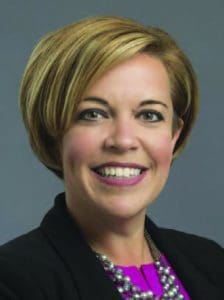Nurses address social determinants of health on Chicago’s West Side.


Can you tell us about your journey to leadership?
I started at Rush when I was 18, working as a patient care tech during nursing school breaks. I climbed the clinical ladder—charge nurse, manager, director, executive director—while I was getting my master’s and my doctorate along with my certifications. I feel lucky that Rush invested in me as I followed my nursing leadership path. I’ve found amazing mentors via my involvement in ANA-Illinois and the Illinois Organization of Nurse Leaders.
How did you make the business case for the “Food is Medicine” program?
My doctorate program in systems leadership prepared me well for the C-suite business proposal, but I was very nervous. I had the numbers ready: how to get the $30,000 together to run the program for 3 years; how stopping just three patients from being readmitted to the emergency department will save Rush $30,000. I was sweating when I presented to the CNO, CEO, CMO, president of the hospital, and the vice president of food and nutrition services. But I had barely started my presentation when they said, “Great, yeah, let’s start! Jen, this is the right thing to do.”
How can nurses build on their roles as patient advocates to become leaders?
We’re on the frontlines, building relationships not only with patients and their families, but also with the multidisciplinary team—the social workers, community outreach department, nursing leadership, care management, the director of food and nutrition, even IT leadership— that works to get patients’ needs met. I built a collaborative relationship with this team; without it, I would not have been able to get our food insecurity programs off the ground. The relationships you build as a bedside nurse are the ones that help you move into leadership at your organization. The people you collaborate with will remember you and tap you on the shoulder to say, “You’re a great charge nurse, have you thought about leadership?”
Do you see a shift in healthcare from focusing on illness to overall health?
At Rush, we focus on five social determinants of health (SDOH): food insecurity, primary care providers and insurance, transportation, housing, and utilities. The “Food is Medicine” program starts with nurses, who ask each of their patients eight screening questions to determine their SDOH needs. Based on the patient’s response, we make sure he or she gets what is needed, whether that’s food, help with utility bills, transportation to appointments, and even housing.
What leadership lessons can you share?
Don’t be afraid to follow your vision and your dream. Take your idea to the C-suite. They want to hear from us! I also believe in sharing knowledge. We have a step-by-step guide on how to start food insecurity programs like ours in other organizations. We presented at the 2019 ANCC National Magnet Conference®, and I’ve spoken at the National Quality Forum in Washington, DC, at ANA, the Illinois Organization of Nurse Leaders, and the American Organization for Nurse Leadership. My idea of starting these food insecurity projects in our community hospital has grown and is being implemented across the country. Anyone can make this happen.
To learn more, contact Jennifer_M_Grenier@rush.edu.
Interview by Elizabeth Moore, MFA, writer at ANA.



















1 Comment.
Hello, I’d like to know how to start a food as medicine program in my community.